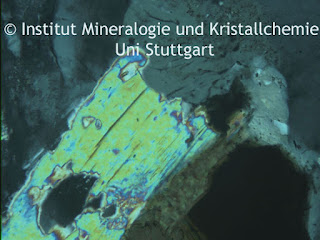Muscovite with albite from Doce valley, Minas Gerais, Brazil.
Photo: Rob Lavinsky
Muscovite can be colorless or tinted through grays, browns, greens, yellows or very rarely, reds. It is the most common mica, found in granites, pegmatites, gneisses, and schists. In pegmatites it is often found in immense sheets that are commercially valuable. It is in demand for fireproofing and insulating materials and to some extent as a lubricant.
The name muscovite comes from Muscovy-glass, a name formerly used for the mineral because of its use for windows in Russia.













